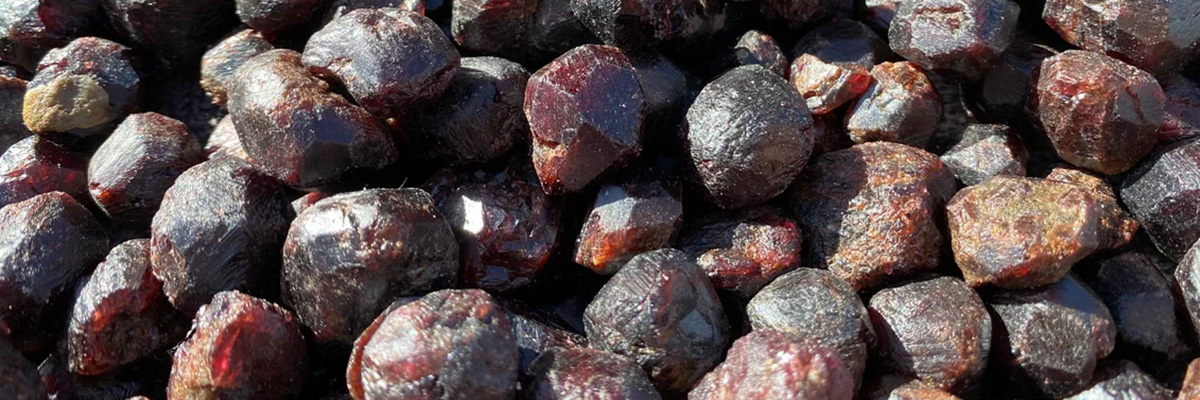Garnet is a group of silicate minerals belonging to the cubic crystal system and is part of the nesosilicate subclass. Garnets are known for their diverse range of colors, including red, brown, green, yellow, and even colorless varieties. The general physical characteristics of garnet minerals include well-formed dodecahedral, trapezohedral, or rounded crystal structures, which can vary in size. Garnets are commonly found in metamorphic rocks, such as schist and gneiss, as well as in some igneous rocks and sedimentary formations.
Usage:
Garnet is used in various industrial applications, primarily as an abrasive material due to its hardness and sharp, angular grains. It is utilized in waterjet cutting, sandblasting, and the production of abrasive powders and sandpapers. Additionally, garnet has been used historically as a gemstone and ornamental stone, with some varieties also used as mineral specimens for collectors.
Gemstone:
Garnet is considered a gemstone when found in its transparent, gem-quality form. The most well-known and popular varieties include almandine, pyrope, spessartine, grossular, andradite, and uvarovite. Garnet gemstones are available in a wide range of colors and display a vitreous luster, making them attractive choices for various jewelry items such as rings, necklaces, and earrings. Their durability and rich color palette contribute to their popularity in the world of fine jewelry.
Origin:
Garnet minerals are formed in nature through various geological processes, including the metamorphism of rocks, the crystallization of magma, and the weathering of pre-existing garnet-bearing rocks. The diverse range of garnet species is a result of variations in chemical composition, which are influenced by the specific geological conditions under which they form. The resulting garnet crystals can be found in various sizes and shapes, depending on the environment of formation.
Occurrence:
Garnet is found in a variety of geological settings, including metamorphic rocks like schist and gneiss, igneous rocks like granites and basalts, and sedimentary formations such as alluvial deposits and heavy mineral sands. Some of the most significant deposits of garnet can be found in countries like the United States, India, Brazil, and Madagascar. These areas are known for their abundance of geological environments suitable for the formation of garnet minerals.
Metaphysical:
In metaphysical and spiritual practices, garnet is believed to possess a range of properties. The mineral is said to inspire love, passion, and devotion, and to promote self-confidence, courage, and personal transformation. Garnet is also considered a stone of protection and grounding, helping individuals to connect with the Earth and to release negative energies. Additionally, the mineral is believed to enhance creativity, mental clarity, and emotional healing.
| Class | Nesosilicates |
| Formula | X3Y2(SiO4)3 (X and Y are various metal ions) |
| Luster | Vitreous |
| Hardness (Mohs) | 6.5 – 7.5 |
| Streak | White |
| Color | Red, brown, green, yellow, colorless |
| Cleavage | Indistinct to none |
| Specific Gravity | 3.1 – 4.3 |

